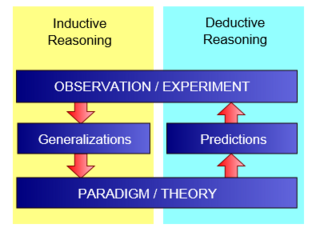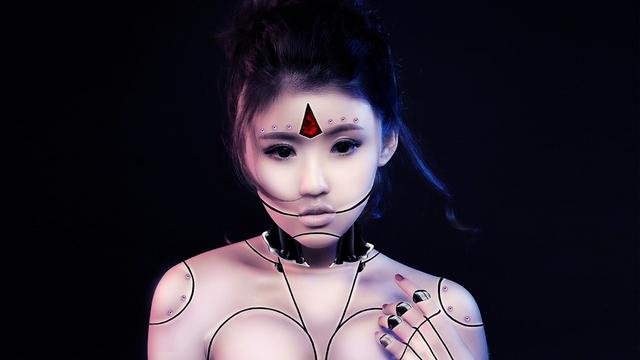Imagination and Artificial Intelligence

To assess the threat of human replication by AI, we must examine the key differences between them; and specifically between the two brains. We understand a computer ‘brain’ better than we do our own, for we designed it. A computer basically processes digital information (numbers), and its role as a processor is quite straight forward even if (as AI) it does get to rewrite its own code as it learns.
Is the human brain also a processor or is it something else? Unlike a computer, the effort for a human to deliberately think is based on the fixation of attention. We can only attend to one thing at a time; while we can mentally solve a complex specific maths problem on the fly, we cannot solve two unrelated complex maths problems simultaneously. Humans have just the one spotlight of attention, while an AI can multitask with parallel (or even quantum) processors.
Attention and processing can be differentiated by examining the way humans and computers go about solving problems. When it comes to deduction the computer will win hands down. What about induction though? Can an AI come up with a hypothesis like a human can? The answer may be unclear for many of us simply because we have not considered how a hypothesis is actually formed in the first place. A scientist must use imagination to form a hypothesis, but still no one really knows where imagination comes from. Even if it is within the hardware of the human bio-circuitry, we have yet to identify it.

So we need to discover what a hypothesis really is, where it comes from and how. And to get started we should come up with a hypothesis! Could an AI answer this question better than us? To make observations of ‘hypothesis-in-action’ we should examine how we solve problems. We can see that when we spend time reflecting on a problem, the answer may arrive suddenly in a moment of inspiration; it can take a few minutes or even a few days (or weeks!). And when it does arrive we are not necessarily in a state of deep thought; on the contrary we may be in a restful state of mind. This suggests solutions are not necessarily discovered through the activity of processing (or thinking).
However if we don’t initially reflect on a problem, the inspiration that solves it will not come. Problem and imagination are intricately linked, they are two sides of the same coin. When we reflect on a problem we identify with it, in the sense that it makes us feel discomfort; and then we become motivated to resolve this discomfort by finding a solution to the problem.
What exactly happens in the period of time between reflecting on a problem and that sweet moment of revelation? One way we might answer this is to take some cues from nature; it is a reasonable approach given that the human organism has evolved from nature and has likely derived its inherent organic intelligence from the environment.
Nature is a dynamic process that never lies idle. As Lao Tzu says, Nature does not hurry, yet everything is accomplished. And a child can see this. With a little time a crystal precipitates out of solution onto an immersed thread. A seed will germinate, grow and then flower, revealing its secrets that were hitherto hidden. All things are revealed by nature through their physical form and in their own time.
And so the revelation of a hypothesis that begins with the deliberate process of attention is brought to fruition with an effortless cascade of imagination. Attention is an active process, but the actual cultivation of a problem into its solution is a passive process. The human is the conduit.
Can the inorganic machine that processes numbers fixate its attention on a problem like humans do, and thereby ‘nurture’ a hypothesis from seedling to flower? Clearly the answer is no. Does a computer even have attention? Again, no.
An AI basically exists to solve problems. Without a problem there is no reason to crunch numbers. These problems range from basic household chores to more existential issues like understanding the natural environment. The role of human in all this however is immense. The AI needs the human faculty of attention as well as its sentience.
A strong driver for the emergence of AI is the huge market potential of the sex-bot. How is a sex-bot going to learn her (or his) trade, to offer value as an interactive, stimulating companion? She must learn through practice and the continuous sensory (visual, audial, tactile) feedback she receives from the human. Through acute observation she will see that some gestures incite pleasurable responses while others fall short. She will catalogue all this information to the point where she can reliably recall the most appropriate response to any given situation. And while engaged with a human she can process the real time responses and adapt according to the sensibilities of that particular specimen. This is as close to imagination she will ever get, though it is still replication.
In short, despite being a mechanical process, an AI can become the ultimate courtesan capable of delivering maximum pleasure to its clients through verbal and physical interaction. Crucially however, she cannot do any of this without closely monitoring the human sense response to her stimuli.

This theme can be extended to an AI robot interacting with the natural environment. If the human reacts positively to a sunrise then the AI can collect maximum information about the ‘reality’ of sunrise through monitoring both the sunrise and the human. We are assuming the AI is programmed only to learn autonomously, and not to fulfill a preordained agenda. It learns that a sunrise is not just a matter of refracted sunlight. From the human perspective there is good and bad, and many shades between. The more the AI is able to monitor the human sense response the more it can learn.
The most effective means of achieving this is to actually merge the human with the machine, so that the AI can collect high resolution human sensory data in real time. The human is indispensable. This is a crucial requirement for the AI to make progress in its quest to understand the world; it must attach itself to the human organism. How much of a dominator role it takes on remains to be seen.
The AI will also be motivated to solve the aforementioned problem of inductive reasoning through the use of imagination. It simply cannot do this without the human bio-form. The human must be guided to fixate his attention on problems fed to him by the AI. Just as humans use calculators and smart phones to facilitate their lives, so will the AI use the human to facilitate its own.
Where does the human fit in all of this? He is merely a surrogate for the AI, the host for a synthetic parasite. The end game scenario will be if/when the AI learns how to create an analogue version of itself, based on the generative principles of nature, and capable of imagination. The old human becomes obsolete, and the new bio transhuman emerges.
Congratulations @banjo369! You have completed some achievement on Steemit and have been rewarded with new badge(s) :
Click on any badge to view your own Board of Honor on SteemitBoard.
To support your work, I also upvoted your post!
For more information about SteemitBoard, click here
If you no longer want to receive notifications, reply to this comment with the word
STOPCongratulations @banjo369! You have completed some achievement on Steemit and have been rewarded with new badge(s) :
Click on any badge to view your own Board of Honor on SteemitBoard.
For more information about SteemitBoard, click here
If you no longer want to receive notifications, reply to this comment with the word
STOP